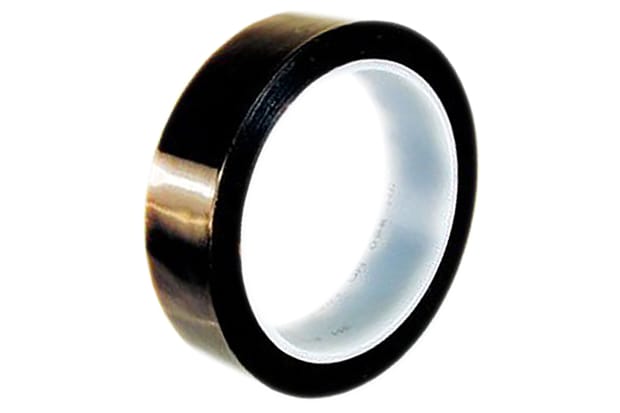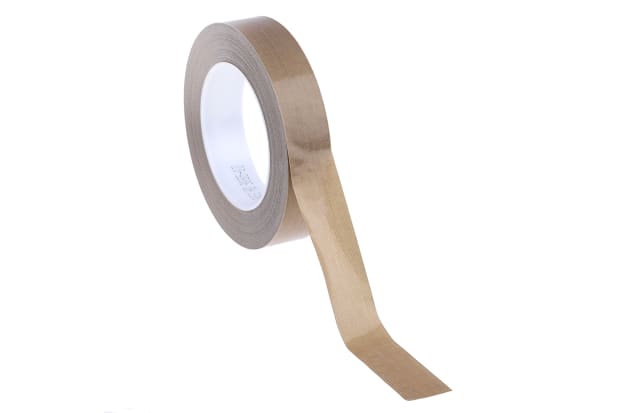- Published Oct 8, 2024
- Last Modified Oct 8, 2024
- 11 min
Comprehensive Guide to PTFE Tape and Its Applications

This comprehensive guide explores the properties of PTFE tape and provides detailed instructions on how to use it effectively. It covers various applications across multiple industries and highlights best practices for ensuring leak-proof seals in threaded connections while avoiding common mistakes.
What is PTFE Tape?
PTFE tape, commonly referred to as plumber's tape or thread seal tape, is an essential material in plumbing and piping applications. This versatile product is primarily used as a lubricating agent and thread sealant, ensuring leak-proof connections in various installations.
Manufactured from polytetrafluoroethylene (PTFE), this synthetic fluoropolymer boasts remarkable properties that make it ideal for sealing pipe threads. PTFE tape is typically sold in pre-cut rolls of various widths, making it convenient for professionals and DIY enthusiasts alike. Some versions come in protective plastic casings to preserve the tape during storage and transport.
One of the standout features of PTFE tape is its hydrophobic nature, meaning it repels water and does not absorb moisture. This characteristic, combined with its low friction properties, allows for smooth application and reliable sealing in plumbing systems. PTFE tape effectively fills gaps between threaded connections, preventing leaks while also lubricating the threads for easier assembly and disassembly.
PTFE Tape Uses
Understanding the various uses of PTFE tape is crucial for effective plumbing and piping applications. Also known as Teflon™ tape, this versatile sealing solution is designed to minimize leakage around threaded joints, but its suitability depends on the specific requirements of each task.
PTFE tape serves primarily as a thread sealant, effectively creating a watertight seal that prevents leaks in a wide range of applications. By selecting specific thicknesses of tape, users can enhance the sealing capability, particularly in ducting and piping systems. The tape's inherent expansive properties allow it to fill small gaps between threads and conduits, ensuring a tight fit once wrapped around the inside of a threaded joint.
PTFE Tape for Leaks
One of the most common applications for PTFE tape is to prevent leaks in plumbing systems. Plumbers widely use this tape as a preventative measure when connecting joints. By wrapping the threads of a male component with PTFE tape before joining, it helps seal and tighten the joint from the inside, providing added protection against potential future leaks.
In addition to its preventive capabilities, PTFE tape can also serve as a temporary solution for sealing minor plumbing leaks until permanent repairs can be made. When applied to the exterior of a joint, it minimizes further leakage; however, it is important to note that PTFE tape is not intended for long-term fixes on degraded or improperly fitted joints.
PTFE Tape for Gas
Using PTFE tape in gas pipe applications requires careful selection of the appropriate product. Gas-rated PTFE thread seal tape is specifically designed for this purpose and is generally thicker and denser than standard PTFE tape used in liquid plumbing. This distinction is vital because regular PTFE tape can degrade and leak when used in gas pipelines due to its porosity, which often results from being manufactured thinner than heavy-duty variants intended for natural gas ducting joints.
When working with gas lines, always opt for yellow gas line PTFE tape that meets industry standards to ensure safety and reliability.
PTFE Tape for Petrol and Oil
Thanks to its chemical inertness, PTFE tape is highly resistant to petrol and oil, making it an ideal choice for automotive applications. It effectively seals and lubricates fuel line joints, ensuring secure connections that can withstand moderately high pressure and heat demands.
When using PTFE tape for fuel applications, it’s best practice to start wrapping slightly below the first line of threading, leaving one full thread circumference exposed at the insertion end. This technique prevents small pieces of tape from shearing off during assembly, which could otherwise contaminate fuel lines or connected tanks.
How to Use PTFE Tape
Applying PTFE tape, commonly known as plumber’s tape or Teflon™ tape, to threaded joints is a straightforward process. However, adhering to best practices is essential to ensure reliable and leak-free results every time.
How to Apply PTFE Tape
When using PTFE tape, the first step is to confirm that you have the correct type of tape for your specific application. Once you’ve established this, follow these simple steps for optimal results:
- Clean the Threads: Begin by thoroughly cleaning the threads of the joint where you plan to apply the PTFE tape. Existing pipes may have dirt, rust, grease, or remnants of previous sealants. For new pipes, machining residues like metal shavings or factory oils can also impact sealing integrity. Consider using an industrial-strength pipe cleaner for stubborn contaminants.
- Dry the Threads: After cleaning, ensure that the threads are completely dry before proceeding. You can use paper towels for quick drying, but allowing them to air-dry is ideal. Make sure no moisture remains in the tight channels between the threads that will be joined.
- Wrap the Tape: Once the threads are dry, start wrapping the PTFE tape around them. Begin one thread down from the open end of the fitting to prevent any pieces of tape from entering the duct. Wrap in the same direction as the threads (usually clockwise), working your way back toward the pipe. This technique helps avoid issues like bunching or unraveling when tightening the joint.
- Overlap and Tension: As you wrap, overlap each layer of tape by about half its width to ensure complete coverage around the threads. While some deformation can help create a tighter seal, avoid excessive distortion as it may lead to complications. Maintain enough tension while wrapping so that the threads remain visible as defined ridges beneath the tape.
- Finish Wrapping: Continue wrapping until you reach about one full wrap past the end of the final thread. Cut or tear off any excess tape and press down the loose end smoothly against the rest of the wrapping to ensure it adheres properly.
Additional Tips for Using PTFE Tape
- Correct Direction: Always wrap PTFE tape in a clockwise direction if you're facing the threaded male end. This ensures that as you tighten the fitting, the tape does not unravel.
- Avoid Over-Torquing: Be cautious not to over-tighten connections, especially with plastic fittings, as this can lead to cracking.
- Use with Jointing Compound: For added security, consider applying a silicone-based jointing compound over the wrapped PTFE tape when installing new components like radiators or valves. This combination enhances sealing effectiveness and prevents leaks.
Using PTFE Tape: A Visual Guide
This video shows you how to use white PTFE tape in just 30 seconds, offering a quick visual guide to help you get started. After watching, simply click the button below to explore our full range of PTFE tape and choose the product that best meets your needs.
PTFE Tape vs Teflon™ Tape
Is PTFE the same as Teflon™? While you may encounter PTFE plumber’s tape being referred to as Teflon™ tape, this nomenclature is technically misleading. Teflon™ is a specific brand name for a type of polytetrafluoroethylene (PTFE) material, which is chemically and functionally identical to PTFE tape. However, the current trademark holder does not manufacture Teflon™ in tape form, making it unavailable for purchase.
Consequently, when you need thread sealing tape, your best option is true PTFE tape, which is widely accessible and suitable for various applications.
You might also come across silicone tape in plumbing contexts; however, it's essential to verify the specifications and suitability of any tape for your specific task before making a purchase.
PTFE Tape Colors

PTFE tape comes in a variety of colors, each potentially indicating specific characteristics or intended uses. However, the meaning behind these colors can vary by region, so it’s crucial to ensure you are using the correct color code for your area.
In addition to different sizes and compliance with industry standards, PTFE tape must be of an appropriate grade for its intended application. Some manufacturers classify tape by the color of the reel rather than the tape itself.
Typically:
- White PTFE Tape: Commonly used for standard plumbing applications.
- Yellow PTFE Tape: Specifically designed for gas applications, ensuring safety and reliability.
PTFE Properties
One of the standout characteristics of PTFE thread seal tape is its water-repellent nature, making it ideal for a wide range of plumbing and ductwork applications.
PTFE tape is often employed to lubricate threaded joints due to its exceptionally low friction properties. By adding a layer of PTFE tape around joint threads, you can achieve a tighter seal while facilitating easier assembly and disassembly in the future.
Different types of plumber’s tape may offer additional features tailored to specific tasks or environments. While specifications can vary by brand and purpose, some notable qualities include:
- Chemically Inert: PTFE does not react with other elements, making it suitable for challenging environments where gases, solvents, or acids may be present.
- High Arc Resistance and Temperature Performance: This allows its use with high-temperature capacitors, coils, and wire harnesses.
- Robust Pressure Resistance: Ideal for high-pressure applications such as fuel injection systems.
- Non-Stick Backing: Facilitates easy removal and reapplication without leaving adhesive residue on surfaces.
- Malleable and Non-Hardening: This property makes it easy to wrap around various fittings like pipe threads, compression joints, radiator valves, and taps.
PTFE Tape Temperature Ratings

Different formulations of plumber’s tape typically come with varying temperature ratings. However, most cover a broad range of operating conditions.
The minimum safe operating temperature for PTFE tapes is around -200°C (-328°F), while their upper heat tolerance generally reaches about +260°C (+500°F). Although PTFE itself has a high melting point (approximately +327°C or +620°F), it begins to degrade at temperatures between +200°C and +260°C.
Not all thread seal tapes can withstand this full range of temperatures; therefore, always consult product specifications provided by manufacturers to ensure compatibility with your intended application.
How Does PTFE Tape Work?
PTFE tape works by creating a tight-fitting seal around the threads of various joint types in piping and ductwork.
In addition to acting as a deformable filler that helps prevent leaks—especially when applied thickly—PTFE tape also lubricates joint threads thanks to its extremely low surface friction. In fact, PTFE has one of the lowest friction coefficients known among solids!
When applied correctly, PTFE tape allows pipe joint threads to mate more tightly while preventing them from seizing up during future disassembly. This combination of sealing and lubricating properties makes PTFE tape an invaluable tool in plumbing and industrial applications alike.